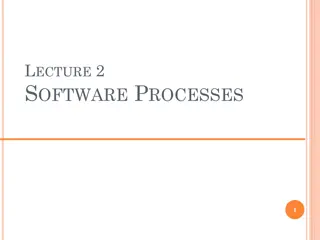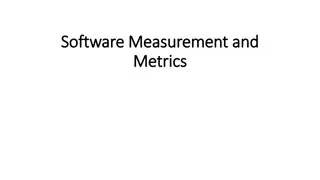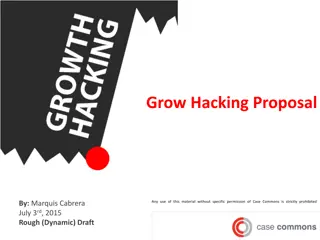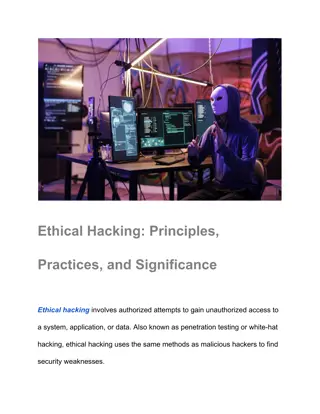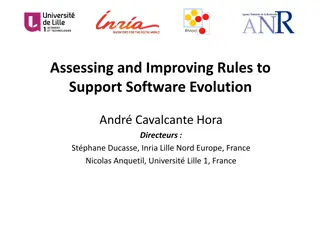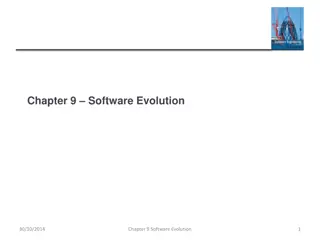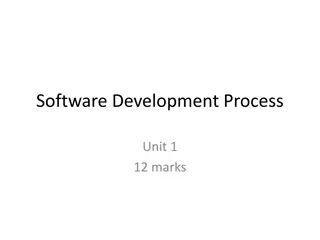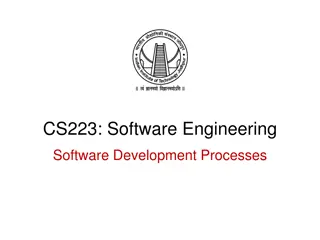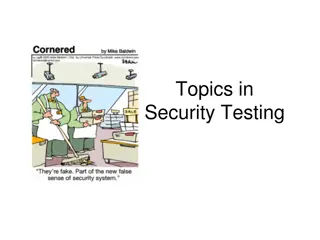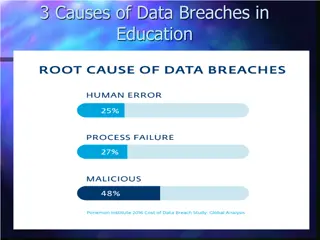Evolution of Software Security and Hacking
The history of software security and hacking dates back to the Enigma Machine in the 1930s, with advancements leading to modern web-based attacks like DoS and SQL Slammers in the early 2000s. Explore the evolution of web technologies and the emergence of new exploits targeting users directly.
Download Presentation

Please find below an Image/Link to download the presentation.
The content on the website is provided AS IS for your information and personal use only. It may not be sold, licensed, or shared on other websites without obtaining consent from the author.If you encounter any issues during the download, it is possible that the publisher has removed the file from their server.
You are allowed to download the files provided on this website for personal or commercial use, subject to the condition that they are used lawfully. All files are the property of their respective owners.
The content on the website is provided AS IS for your information and personal use only. It may not be sold, licensed, or shared on other websites without obtaining consent from the author.
E N D
Presentation Transcript
HISTORY OF SOFTWARE SECURITY AND HACKING Based mainly on the book Web Application Security: Exploitation and Countermeasures for Modern Web Applications by Andrew Hoffman (2020)
HACKING Hacking? the gaining of unauthorized access to data in a system or computer (Oxford Languages) Q: Is this a complete definition of hacking? Hacking is the act of identifying and then exploiting weaknesses in a computer system or network, usually to gain unauthorized access to personal or organizational data. Hacking is not always a malicious activity, but the term has mostly negative connotations due to its association with cybercrime. (https://www.kaspersky.com/resource-center/definitions/what-is-hacking) 2
HISTORY OF HACKING 1930s: the Enigma Machine 1940s: Automated Enigma Code Cracking The Bombe : A bombe was an electric-powered mechanical device that attempted to automatically reverse engineer the position of mechanical rotors in an Enigma machine based on mechanical analysis of messages sent from such machines. 1950s: Telephone Phreaking 1960s: Anti-Phreaking Technology 1980s: Computer Hacking - Computer virus (1983, Fred Cohen) - Computer Worm (1988, Robert Morris) 3
WEB EVOLUTION 1990s: The HTTP protocol 1995: Netscape Navigator (web browser) 2000s: from static HTML pages to the dynamic and interactive Web - dynamic? Client-side scripts, browser plug-ins, Java applets, - Interactive? User-generated data, interactions between users - The Web has evolved from a document distribution/sharing platform (in early 1990s) to an application distribution platform (late 1990s and after). - Users can access mission-critical functionality over the web. - Military communications, Bank transactions, - Web 2.0 enabled blogs, wikis, media sharing sites, - In addition to the servers and the networks, web users have become a prime target of attacks. 4
HACKING ON THE WEB early 2000s: DoS attacks shut down major web sites (Yahoo, Amazon, eBay, ) 2002: Microsoft s ActiveX plug-in vulnerability remote file uploads and downloads invoked by a malicious website ~2003: SQL Slammers made the Internet unavailable in may countries. Mid 2000s: Phishing websites Cross-Site Scripting (XSS) vulnerabilities allowed a hacker s code to run in a user s browser session inside of a legitimate website. 5
HACKING ON THE WEB (CONT.) New types of exploits emerged that take advantage of the user rather than the network or server. Attacks often scale by distribution through email, social media, or instant messaging. Some hackers even build up legitimate networks of real websites to promote a single malicious website. Oftentimes, malicious code is hidden behind a legitimate-looking interface. (Phishing) Browser plug-ins are frequently caught stealing data. Sometimes hackers even find ways to run their own code on websites they do not own. 6
SECURING WEB APPLICATIONS Traditional standalone applications have become web applications. Hackers today are primarily targeting users and data that can be accessed via web browsers. Issues to be addressed? Browser (in)security o The web browser has become a universal platform on which users access applications. Protocol security o From HTTP to HTTP over SSL (HTTPS) Application security o Hacking often exploits bugs in an application s code. o A web application can have hundreds of open source dependencies, integrations with other websites, and multiple databases of various types, and be served from more than one web server in more than one location. 7
SECURING WEB APPLICATIONS (CONT.) Browser (in)security A web browser is used by a single user. However, A web page on a web server is shared/retrieved by multiple users. Loading a web page often involves running a script. What the user sees in a single page may contain contents from multiple servers. Data generated by a user is sent back to the web server. Same Origin Policy (SOP): isolation between websites with different origins Under the policy, a web browser permits scripts contained in a first web page to access data in a second web page, but only if both web pages have the same origin. (Wikipedia) Content Security Policy (CSP) allows the developer of a website to specify various levels of security, such as whether scripts should be able to execute inline (in the HTML). ?? 8
SECURING WEB APPLICATIONS (CONT.) Web applications security Today s web applications are much larger and more complex than their predecessors. As a hacker can now focus on breaking into web applications by exploiting logic bugs in the application code. Often these bugs result as a side effect of advanced user interaction featured within the web application. The hackers of the past decade focused much of their time on breaking into servers, networks, and browsers; the modern hacker spends most of their time breaking into web applications by exploiting vulnerabilities present in code. 9
SUMMARY Modern web applications are enhanced by new features, which bring new surface area for attackers to exploit. Each new technology comes with its own unique attack surface and vulnerabilities. The increasing complexity of web-based information systems also increases the attack surface. As a security professional, one must know both offensive and defensive security techniques. Stay up to date on the latest new technologies. Develop security-related critical thinking and problem solving skills. 10



